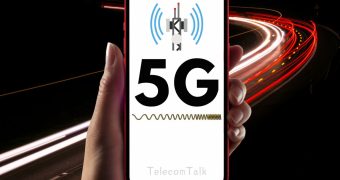
Wi-Fi 6 isn’t an old standard, and while many companies are researching and estimating the benefits of incorporating Wi-Fi 6 into their businesses, the wireless industry is already talking and preparing for the Wi-Fi 7.
‘Wi-Fi 7’ or ‘Wi-Fi 802.11be’ promises higher capacity, lower latency, and better interference mitigations. David Hall, Head of Semiconductor Marketing at NI and Alejandro Buritica, Senior Marking Solutions Manager at NI, believe that testing and measuring equipment for Wi-Fi 7 will have to be different from the currently used testing equipment.
Wi-Fi 7 Can Support 320 MHz Transmissions and 4096-QAM
According to a rcrwireless report, Hall said that Wi-Fi 6 doesn’t really have any major technology limitations. But Wi-Fi 7 is still an upgrade over the Wi-Fi 6 because it allows more spectrum to serve the new and emerging use cases of wireless connectivity.
Buritica agreed with Hall’s statement and said that as the wireless connectivity market grows and new technology takes over, the demand for bandwidth is going to increase. The new Wi-Fi standards allow more spectrum to be utilised, which means a higher bandwidth at a lower latency could be availed.
For testing Wi-Fi 7, though, Buritica said that new and advanced testing equipment is required. He said that testing 320 MHz wide channels will create unique and new testing scenarios that will require the latest generation testing equipment.
For comparison, Wi-Fi 6 supports 160 MHz transmissions and 1024-QAM, but that doubles to 320 MHz transmissions and 4096-QAM with Wi-Fi 7. These two improvements are the reasons why testing equipment needs to be improved.
For the unaware, Quadrature Amplitude Modulation or QAM’s purpose is to facilitate high levels of spectrum usage efficiency. The higher the QAM, the higher the performance hardware needs to be for receiving and transmitting the signal.
Thus, because of the high QAM and transmission rate in Wi-Fi 7, the testing equipment needs to have the latest generation hardware to support the requirements of the wireless connectivity. It is only then that researchers and companies can find out the true potential and capabilities of Wi-Fi 7.
However, the commercial deployment of Wi-Fi 7 is at least three years away from now. The IEEE is looking to publish the amendments of Wi-Fi 7 in the year 2024, meaning the commercial deployment of the technology will be around that time as well.















